Guest Post by Paul Nicklen | Searching for Adlauluq: A Legendary Bowhead Whale
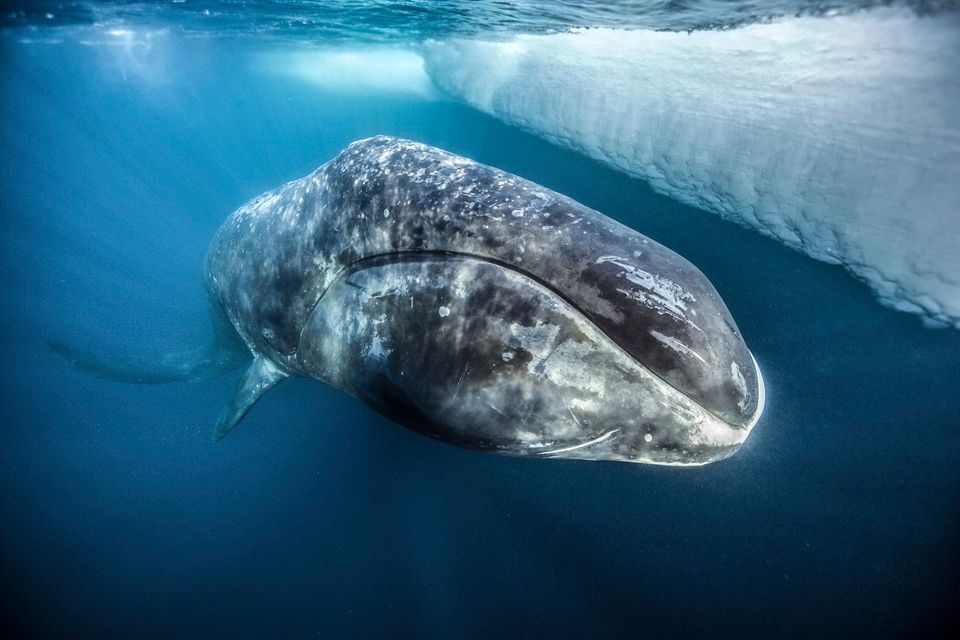
This is a guest post by WWSG exclusive speaker, Paul Nicklen, originally posted here.
It is no secret that I feel a special connection to wildlife in the polar regions more than anywhere else on Earth. Canada’s far north is where I spent my childhood, where I grew up, where I came of age, and where I became a man. It is an important part of who I am today, as a person and a photographer, and that is why I want to share the story of how this image came to be.
People know that I love polar bears and penguins and leopard seals. Perhaps the living creature that has given me the greatest joy, though, the greatest pleasure and the greatest sense of accomplishment, is the bowhead whale.
I was on the sea ice off the coast of Baffin Island this one day, waiting for narwhals. I was cold. So cold. I had been immersed in -1C° (-29°F) seawater for more than two hours and was likely teetering on the edge of hyperthermia. I crawled out of the water and back onto the ice, where I lay there, in a frozen huddle.
My team was making a cup of hot tea by a nearby sled, to warm me up. And then, suddenly, I heard this massive blow of air beside the ice and the unmistakable sound of a large bowhead whale, this leviathan of the deep, breaking the surface for air.
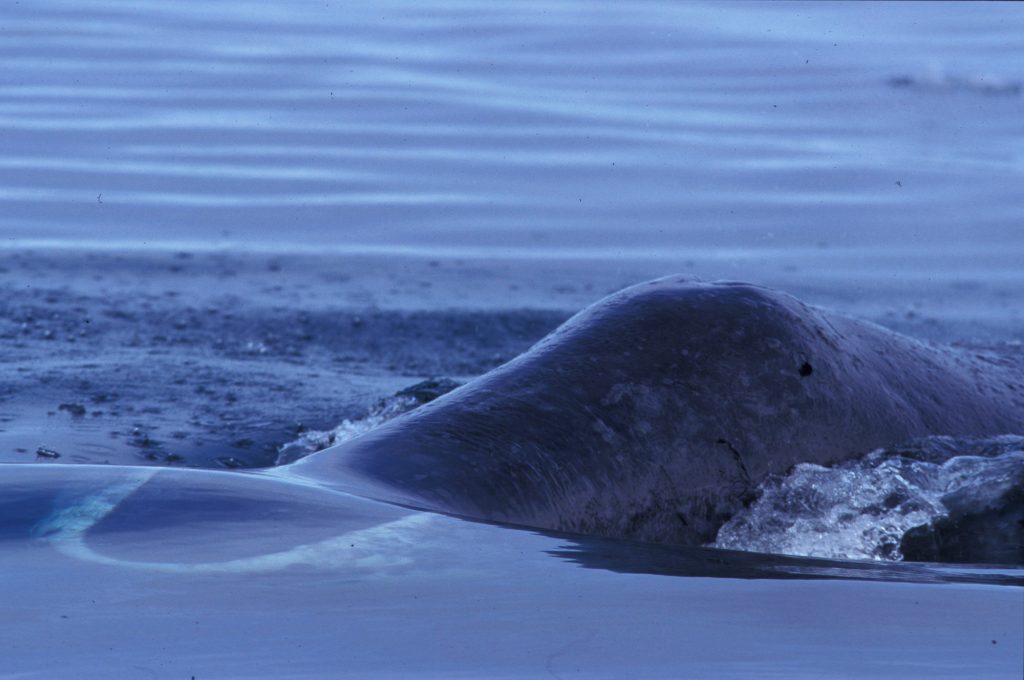
Bowhead whales have two blowholes, located side-by-side on the steeple, the small hump on their backs, to absorb the oxygen they need during longer-lasting dives.
Jed, my assistant at the time, knew I had been pursuing these whales as part of an Ahab-like mission of redemption. I didn’t have time to put on any fins. I was too cold to move. Jed ran over, jammed the underwater camera into my hands, helped me put on my mask, and just rolled me over the edge of the ice into the water.
And just like that, there it was: the second-largest whale in weight ever to exist on this planet right in front of me, floating peacefully against a backdrop of sea ice — everything coming together in one moment.
The whale I had been looking for all this time then did something very strange, and wondrous. Instead of diving and swimming away, it simply stopped and stared. It moved a little closer until it was just inches away. I was using an ultra-wide wide-angle lens, never expecting that I would get this close to anything, let alone this.
The whale started to nudge me with its chin. I sat there frozen, not moving. I could barely feel my hands. I couldn’t hear the shutter, but I could see my hand pressing down, and I could feel the vibration in the housing — so I knew the camera was working. It was taking pictures.
Exactly what those pictures were, I wouldn’t know until later, but I knew the image I wanted: a close-up of this incredible, vast being, an idea that would somehow connect it to the intricate, complex web of life that lives and breathes under the ice. I wanted to capture one of those incredible moments in nature, to show a whale with all these scars from being surrounded by sea ice, breaking the ice, pushing through the ice. It must survive this icy world to access food, but the ice shifts and closes, pulled by ocean currents. On occasion, when trapped in sea ice, the whales have to push through the ice from below and break it in order to breathe.


Sleeping bowheads at the edge of the ice.
The science on bowhead whales is not that definitive, and what little science there is only hints at their majesty. They are one of the oldest, longest-living mammals on the planet. Scientists estimate that some bowhead whales live as long as 200 years.
Of the handful of whale species that live in the Arctic, bowhead whales are by far the largest. They average 50 to 55 feet but have been known to grow as long as 65 feet.
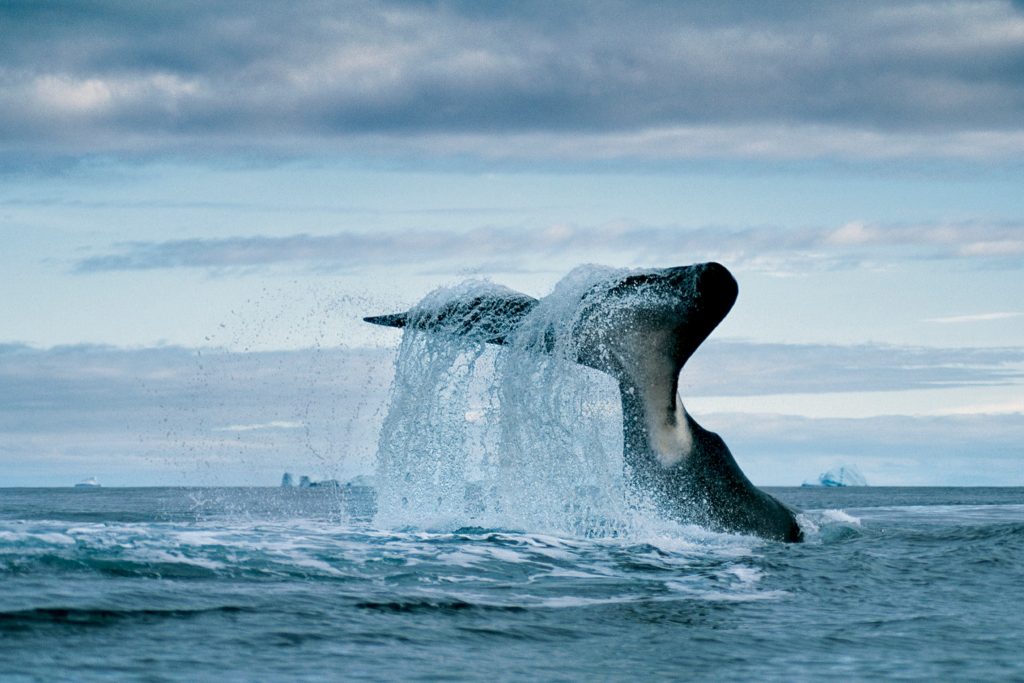
Despite their bulk, Bowhead whales can leap entirely out of the water, their bodies glistening with seawater as they soar through the air and then land with a resounding thump … communicating to all the other whales in their midst.
They were also among the most persecuted whales on Earth, alongside right whales — so named because legend had it at the time, they were the “right whale” to hunt.
The Inuit traditionally hunted only a handful of bowhead whales. They used the whales’ meat for food and the fat for oil, use the jaw bones as supporting structures for their homes, and use other bones in their sleds. As with most indigenous people, the Inuit have traditionally maintained a sustainable balance with nature.
Once European whalers arrived in the 17th and 18th centuries, though, Canada’s eastern population of bowhead whales crashed — from an estimated 11,000 bowhead whales in pre-contact times to a small, remnant population of scattered individuals.
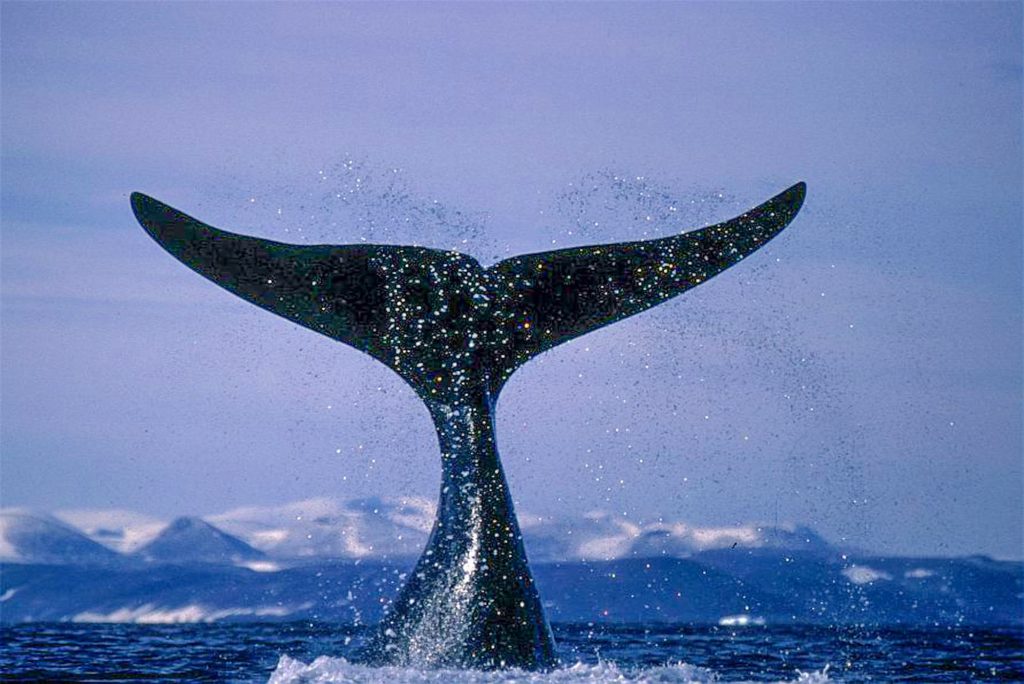
Bowhead whales have the thickest coating of blubber of any sea mammal, with layers up to 50 cm (19 inches). This blubber insulates them against the cold, in both winter and summer.
Whale populations have since begun to recover, following to a whaling moratorium passed in 1966 to protect the species, but survival remains a struggle.
For me, as a young man in my early twenties, I embarked on a life quest through the Arctic, hoping to find this whale. I would hang out with Inuit guides on Baffin Island and learn from biologist extraordinaire and friend Kerry Finley. We would travel the ice edge through the 24-hour sunlight of the Arctic summer, hoping to track down this great leviathan of the deep.
Inuit elders would weave tales about the legendary Adlauluq, an old, white bowhead whale that appeared every so often in the fjords off Baffin island, only to vanish, just as mysteriously. All the other whales would get excited when it appeared. Kerry Finley had scientifically documented its appearance among the other bowheads.
Cultures have long heard wisdom in non-human voices, and yet whales, one of the most vocal and musical voices in the sea, were hunted to the edge of silence, not so long ago.
I did not find Adlauluq on this day, but in capturing this image, I love the thought that Alauluq could still be out there, that it could have survived 150 years of whaling.

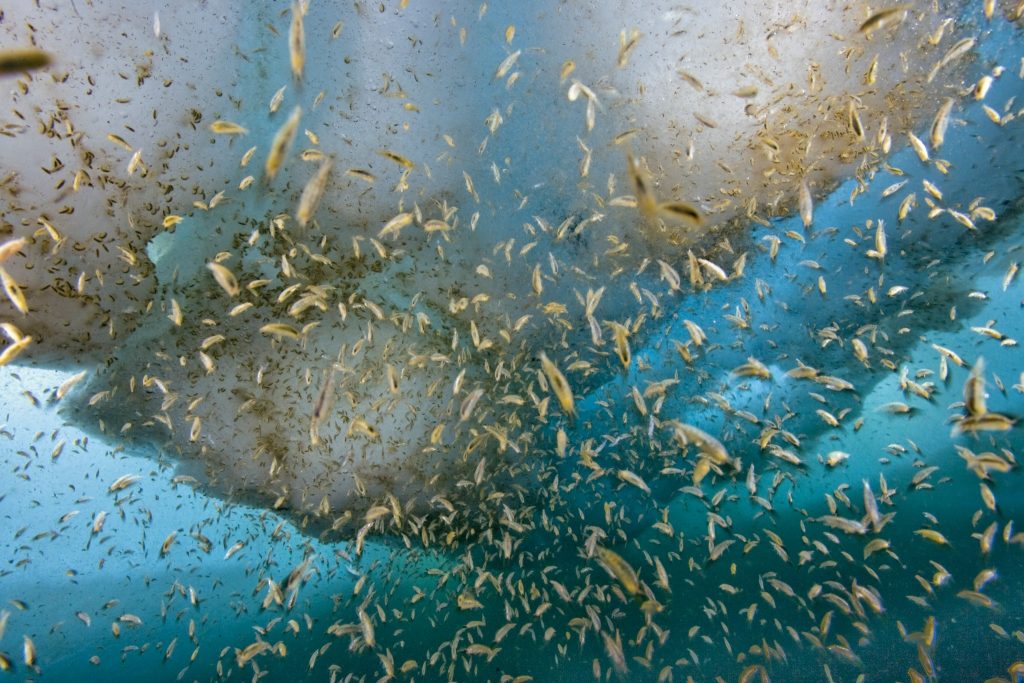
Bowhead whales like ice because that is where their food source lives — copepods. Pound for pound, these tiny crustaceans contain the highest lipid concentration of fat and calories of any animal in the sea, and the life cycle of copepods happens under the ice.
It also saddens me to know that with the loss of sea ice, we will see the loss of copepod populations, bowhead whales’ primary food source, and ultimately the loss of the entire polar ecosystem.
